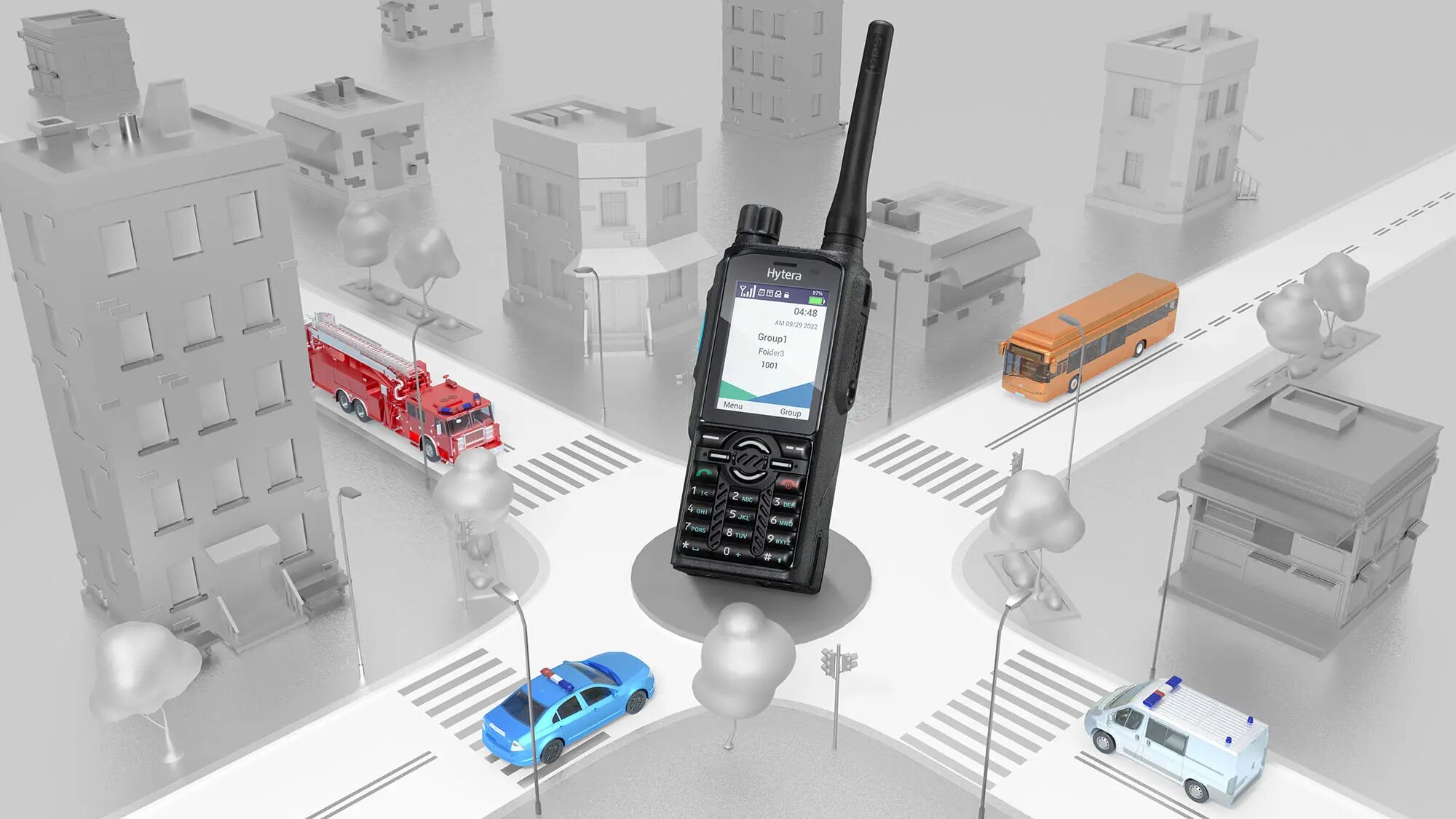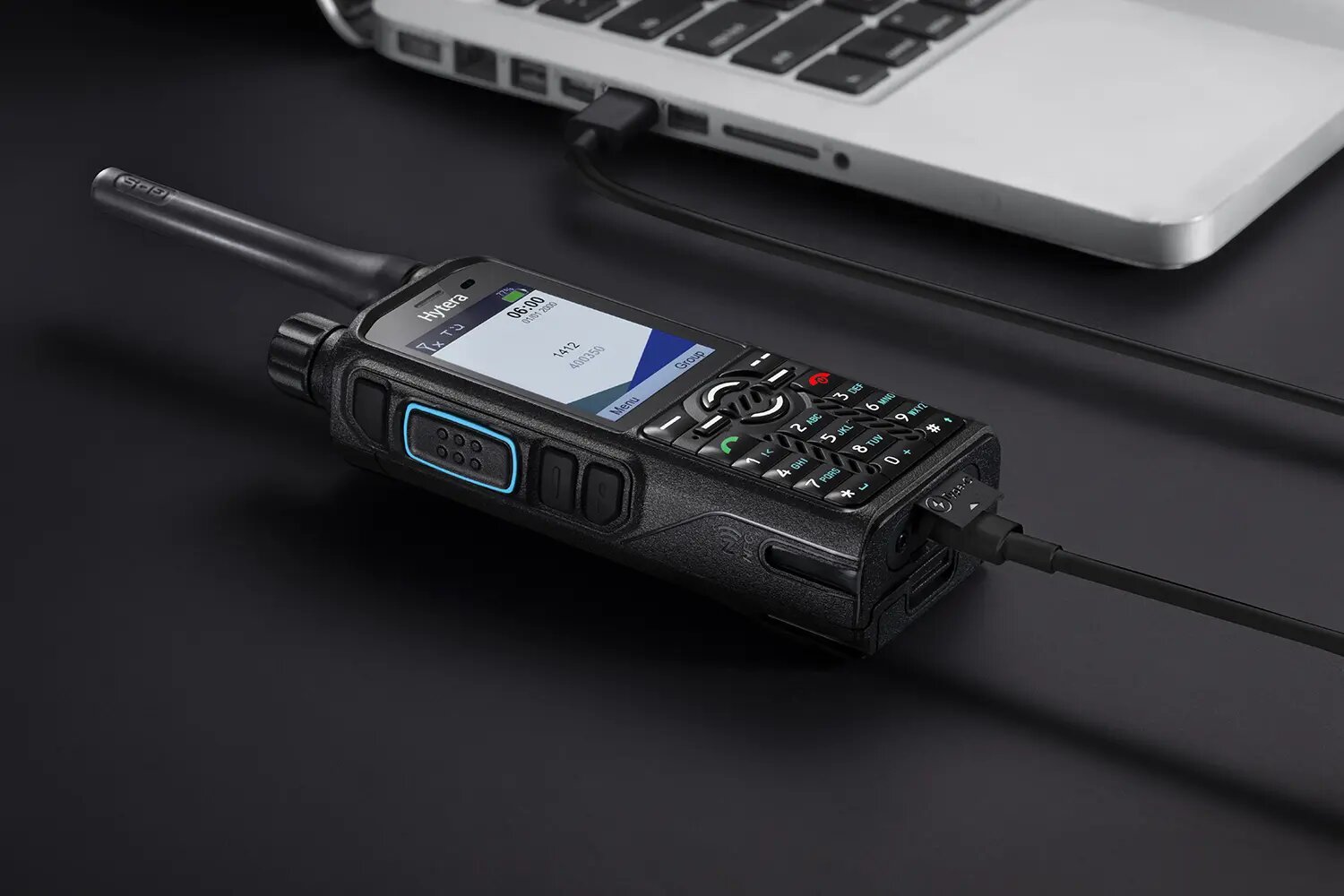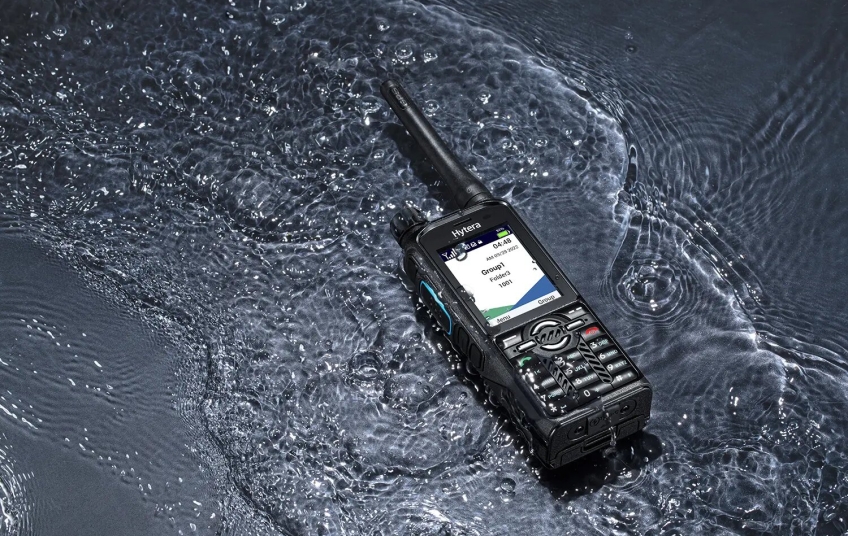On June 29, 2023, Hytera launched the new PT590 TETRA terminal to the Latin American market. From the perspective of the evolving needs of mission-critical users in sectors such as public safety, emergencies, and public services, Hytera has adapted and strengthened its flagship TETRA terminal to provide greater functionality and capabilities to these specialized users.
The launch event was attended by Luis Pérez, Regional Director of Hytera for Latam South, Fernando Valverde, a TETRA communications specialist, and Diego Domínguez, one of the leaders in mission-critical communications in public safety, emergency and public services projects in the Southern Cone.
A new reading on Mission Critical Communications
The virtual event began with a presentation to provide context on the state of mission-critical communications (MCC), where Pérez highlighted the importance of ensuring collaboration and the exchange of information between entities without losing sight of the reliability of the service, real-time availability and the security of each message. In this sense, it is confirmed that an MCC ecosystem today has layers of terminals, infrastructure, applications and software that must evolve to guarantee interoperability and adaptability in the future.
The trend of migrating from analogue to digital networks with ever-increasing performance continues worldwide, both in terms of competitiveness and profitability and suitability for end users. And in this path, the European TETRA trunking has stood out as the one with the greatest expansion globally. This is evidenced by the significant growth of this technology worldwide, reaching 14% in America, 21% in Asia, 48% in Europe and 17% in Africa.
Advantages of TETRA technology
According to Perez, the main advantages for the growing adoption of TETRA internationally are:
-
Higher data throughput than any other LMR technology.
-
High channel efficiency in highly congested areas.
-
High level of interoperability between manufacturers.
-
Multiple functions including location-based data and messages.
-
High security and data protection.
-
Economical and diverse terminals.
This is reflected in the confidence of users and operators in the technology, which, in addition to having more than four million users worldwide, has demonstrated its great capacity for interoperability between TETRA and broadband systems in a constant drive to continually improve.

PT590, the evolution of TETRA radio
For Hytera, the evolution of TETRA is accompanied by the adaptability of its terminals to the needs of users. With the PT590, Hytera revolutionizes mission-critical portable radios and provides excellent coverage, higher audio quality and therefore greater and better communication possibilities for first responders.
Highlights
More powerful and clearer audio
Among its most notable audio features is its high-sensitivity speaker with an optimized design to emit up to 106 phons. The microphone design has also been improved to reduce wind noise and an artificial intelligence noise cancellation algorithm has been incorporated that detects different types of noise and automatically reduces them.
Extended communication range
The PT590 features a reception sensitivity of -120dBm and 3W of transmission power which extends its communication range and ensures comprehensive message transfer.
Secure Communication
Security is undoubtedly one of the most important aspects in mission-critical communications and that is clear in the PT590, which supports all levels (Class 1/2/3) of Air Interface Encryption (AIE), as well as different end-to-end encryption options including: AES, E2EE TETRA, E2EE Hytera (proprietary) and also has an interface for the use of strong encryption via SIM.
Lighter and more ergonomic
Hytera’s compact and lightweight PT590 measures 125*55*31 mm and weighs 285 g which enhances its portability. Also incorporated are a large emergency button that is easy to locate and use; four separate navigation keys for high operation accuracy even without looking at them; a textured PTT (Push to talk) button that is easy to access for users on the move. In addition, a redesigned menu that displays nine icons simultaneously to access different applications, and also features a simplified menu that reduces steps and ensures immediate access to desired functions.
USB Type C port
This new Hytera terminal is equipped with a USB Type C port, which in addition to the charging function, allows programming and updating of the equipment.
In addition to these highlights, Fernando Valverde also spoke about other features that make the PT590 a powerful communication tool, including: an improvement in positioning accuracy which is now +-1m, a 2000mAh battery that provides up to 22 hours of operation, fast charging that allows the equipment to operate for up to 10 hours with 30 minutes of charge, as well as IP68, MIL-STC810H protection and an antimagnetic speaker that allow the equipment to be operated in hostile environments.

TETRA in Latin America
According to the Mission Critical Communications Association (TCCA), “TETRA is the most robust and mature technology worldwide to guarantee Mission Critical communications. It is an open, mature standard that is in continuous development” . For this reason, Diego Domínguez, a mission critical specialist, indicated that in Latin America, professional communication networks have been adopting TETRA as one of the main standards. Countries such as Peru and the Dominican Republic now rely on this European standard for their emergency and public safety communications. While other countries have greater heterogeneity, the trend being to replace obsolete systems or those with limited functionality with TETRA systems.
TETRA success stories in Latin America
During the launch, Domínguez spoke about how TETRA technology has been adopted by public security institutions, public services and emergencies throughout the region, thus confirming that the evolution of TETRA is aligned with the evolution of user requirements in Latin America.
-
Road Police in Brazil: with more than 600 repeater sites, it covers an area of 31,000 km of national highways, ensuring road safety, traffic control and public safety throughout the country.
-
Minera Sierra Gorda in Chile: adopted TETRA technology more than a decade ago, reaching 14 base stations and more than 1,400 terminals. This network is continuously growing due to the increase in traffic and coverage, but it has also adapted to new services and integrated into the LTE network.
-
Peruvian National Police: With 11 regions deployed, it is one of the main TETRA networks in the region. It serves more than 21,000 personnel with robust devices and also has integration with the 105 emergency system that provides assistance to 10 million people in the country's capital.
-
Edesur in Argentina: thanks to the versatility of TETRA technology, the electric power distribution company relies on the European standard for its critical communications, as well as for the transfer of its telemetry in SCADA. This project has been awarded internationally at the CCW recognizing the value and efficiency of the use of technology.
-
911 in the Dominican Republic: With national coverage of more than 210 radio bases and 12,000 terminals, TETRA is the Caribbean country's emergency communications standard.
-
Public safety and emergency system in the province of Mendoza in Argentina: Mendoza's TETRA communications network has significant coverage in the mountainous area of the Argentine Andes. The challenging topography has not been an impediment to serving multiple security, emergency and coordination agencies in the field.
The launch of Hytera's new TETRA terminal was attended by more than 500 registrations from specialists and decision makers from mission-critical entities, which confirms the region's trend towards migrating to open communication standards that adapt to users and prioritize integration and interoperability.





